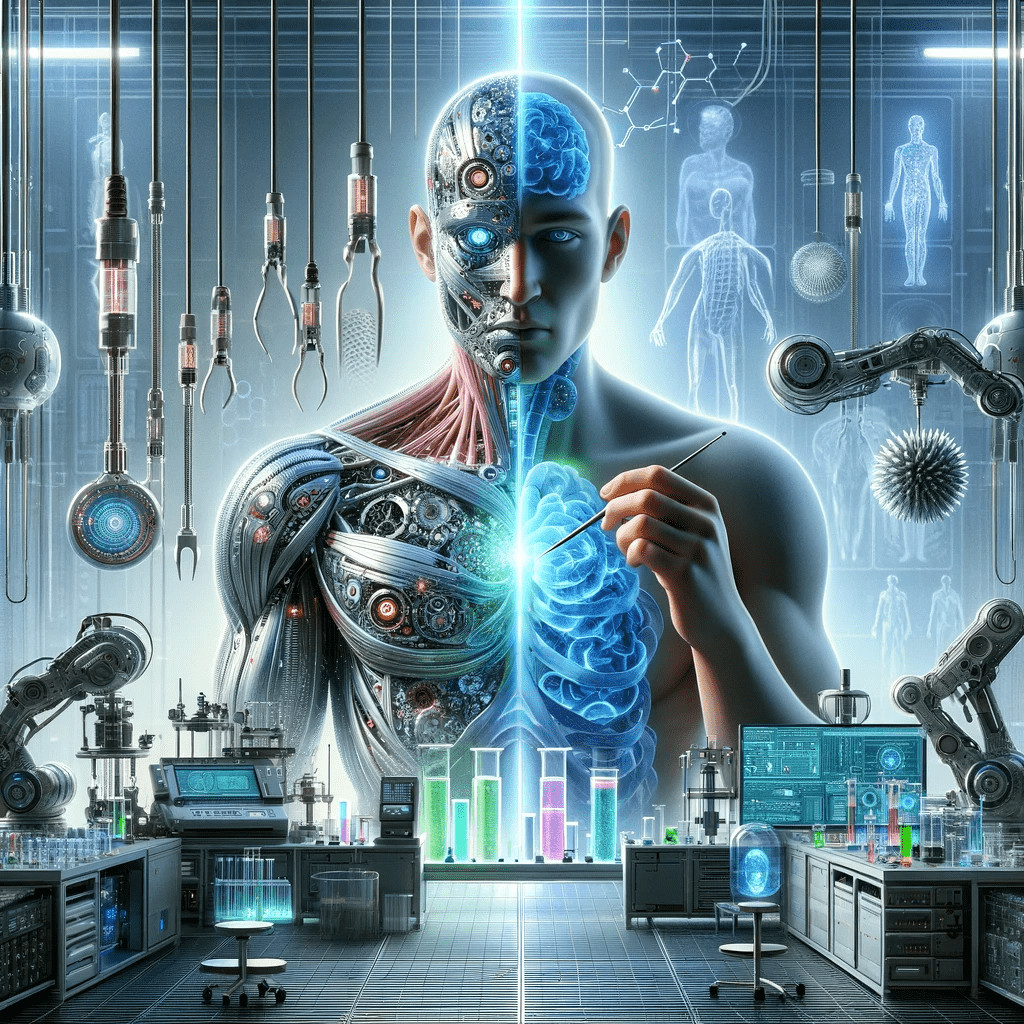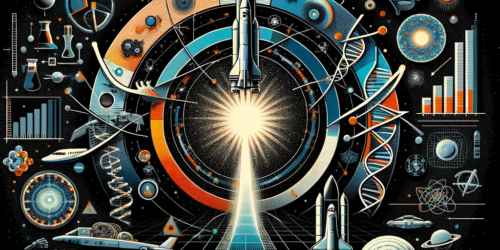Manufactured Beings

Manufactured beings, colloquially referred to as “synthetic life” or “artificial life,” represent an intersection of various scientific disciplines such as genetics, robotics, artificial intelligence, and bioengineering. These beings are created with the intent of mimicking or extending the capabilities found in natural life forms, presenting a revolutionary approach to understanding and potentially augmenting life itself.
The endeavor to create manufactured beings has been a relatively recent phenomenon. Various projects have sprung up around the globe, primarily in research institutions and universities, with notable centers in the United States, Europe, and Asia.
At the most fundamental level, they present a new way to probe the mystery of life itself. By attempting to recreate the processes and attributes that define life, scientists hope to gain insights into the origins and evolution of life on earth. In a more practical sense, manufactured beings could have applications in numerous fields such as medicine, environmental science, and industry. They could be used to develop new drugs, clean up environmental pollution, or even perform complex manufacturing tasks.
One scientific approach to creating manufactured beings involves manipulating and assembling genetic material in novel ways. In 2010, researchers at the J. Craig Venter Institute created a synthetic bacterial cell with an entirely artificial genome. Another method is through robotics and artificial intelligence, creating machines and software that can learn and evolve in a manner akin to biological organisms.
Books such as “Regenesis: How Synthetic Biology Will Reinvent Nature and Ourselves” by George Church and Ed Regis, argue that synthetic life could revolutionize our world in positive ways, from reversing environmental damage to prolonging human life.
Some articles emphasize the potential benefits, such as the possibility of creating synthetic organisms that can consume CO2 to combat climate change. Others highlight concerns about biosecurity and the risks of artificial organisms escaping into the environment.
Further advancements in genetics have given birth to more refined methods of creating synthetic organisms. For instance, the concept of ‘minimal genomes’, where an organism is stripped down to its most basic genetic material required for survival, has been introduced. This allows scientists to add custom genes to serve specific purposes such as consuming pollutants or producing biofuels. Such strategies are being employed by organizations like Synthetic Genomics, co-founded by Craig Venter, to develop solutions for environmental sustainability and renewable energy.
In the realm of artificial intelligence and robotics, we are seeing manufactured beings that exhibit uncanny learning and problem-solving capabilities. Through deep learning and other AI methods, these entities can learn from their environments and improve their performance over time, similar to natural life forms. Boston Dynamics is an example of a company at the forefront of such innovations, creating robots that can navigate complex terrains and even perform backflips.
Martine Rothblatt, a leading futurist and technologist, envisions a future where mind-clones or digital versions of human consciousness could exist, effectively creating a form of manufactured life. Yet, many ethicists and philosophers, such as Peter Singer, caution about potential moral and ethical implications of such advancements, including questions of identity, consciousness, and rights for these new life forms.
Many books and scholarly works have explored these themes. Yuval Noah Harari’s “Homo Deus: A Brief History of Tomorrow” paints a picture of a future dominated by artificial life and intelligences, highlighting both the awe-inspiring possibilities and sobering challenges of such a reality.
The manufacturing of body parts, also known as tissue engineering or regenerative medicine, is a rapidly advancing field. Scientists and medical professionals have successfully manufactured and implanted several different types of tissues and organs. Here are some notable examples:
- Skin: Manufactured skin has been used extensively for patients with burns or chronic wounds. The process typically involves growing skin cells in a lab and then transplanting them to the patient. Companies such as Organogenesis and Integra Lifesciences have commercial products in this domain.
- Blood Vessels: Companies like Humacyte grow human cells on a biodegradable scaffold to create blood vessels, which can then be used in patients requiring dialysis for kidney disease.
- Bladders: In 2006, Dr. Anthony Atala and his team at the Wake Forest Institute for Regenerative Medicine successfully implanted lab-grown bladders into seven patients with bladder disease. This marked one of the first instances of a fully functional organ being grown in a lab and successfully transplanted.
- Windpipes: In 2011, a patient received the world’s first synthetic windpipe transplant. The windpipe was made from a synthetic scaffold and then coated with the patient’s own stem cells.
- Bone: Bone grafts have been created using a variety of materials, including the patient’s own cells, to treat a range of bone diseases and injuries.
- Cartilage: Lab-grown cartilage, specifically for the ear and nose, has been successfully transplanted in humans.
- Corneas: Scientists have developed a way to construct a bio-ink from corneal cells and used a 3D printer to create a cornea, offering hope for future corneal transplants.
While the term “Manufactured Beings” is often used in these contexts to suggest artificial or non-biological entities, it’s also possible to interpret the term in a different way. Considering the many reported UFO encounters where beings display capabilities far beyond human norms, some have speculated that these beings could be biological entities that have been artificially enhanced or “manufactured” to have specific abilities. This interpretation would expand the scope of “Manufactured Beings” in UFO lore to include not only robot-like entities but also biologically-based beings that have been significantly modified or enhanced through artificial means.
“Manufactured Beings” in the context of UFO stories often refers to extraterrestrial lifeforms or artificially created entities, often described as humanoid robots or androids. Such beings are reported by witnesses to possess abilities and characteristics far beyond that of typical humans. Below are examples of such UFO incidents where “manufactured beings” are said to have been encountered.
1. The Roswell Incident (1947): This is arguably the most famous UFO incident in history. It occurred in July 1947 near Roswell, New Mexico, where an airborne object crashed on a ranch. Reports emerged of recovered debris and bodies of non-human entities from the crash site. The U.S. military insisted it was a conventional weather balloon, but skeptics believe it was the wreckage of an extraterrestrial craft containing what could be considered “manufactured beings.”
2. The Betty and Barney Hill Abduction (1961): Betty and Barney Hill, a couple from Portsmouth, New Hampshire, reported that they were abducted by extraterrestrials in a rural portion of New Hampshire. They described the beings as “not human”, leading many to speculate about the possibility of these beings being artificial or manufactured.
3. The Pascagoula Abduction (1973): Charles Hickson and Calvin Parker claimed they were abducted by aliens while fishing near Pascagoula, Mississippi. They described the beings as robot-like with claw-like hands, suggesting these beings were artificial or manufactured.
4. Travis Walton Abduction (1975): Travis Walton, a logger from Arizona, claimed to have been abducted by a UFO while working with his logging crew in the Apache-Sitgreaves National Forest. Walton reported encountering humanoid and non-humanoid beings, which some interpret as “manufactured beings”.
5. The Allagash Abductions (1976): Four men, while on a camping trip in Allagash, Maine, claimed to have been abducted by extraterrestrials. They reported beings that moved mechanically and performed medical procedures on them, leading to theories of these entities being “manufactured beings”.
6. The Ilkley Moor Alien (1987): Philip Spencer, a retired policeman, reported an encounter with an extraterrestrial being on Ilkley Moor in the UK. He managed to take a picture of the entity before it ran away. Spencer described the being as small and humanoid, suggesting it could be a “manufactured being”.
As the discourse around manufactured beings continues to evolve, it is important for the public, researchers, and policymakers to stay informed and engaged. The path to understanding and harnessing the power of manufactured beings is filled with both remarkable potential and profound questions. Navigating this path will require not only scientific and technological acumen, but also ethical foresight, thoughtful regulation, and public dialogue. This convergence of diverse disciplines and perspectives is what makes the field of manufactured beings one of the most exciting and consequential areas of contemporary research.



